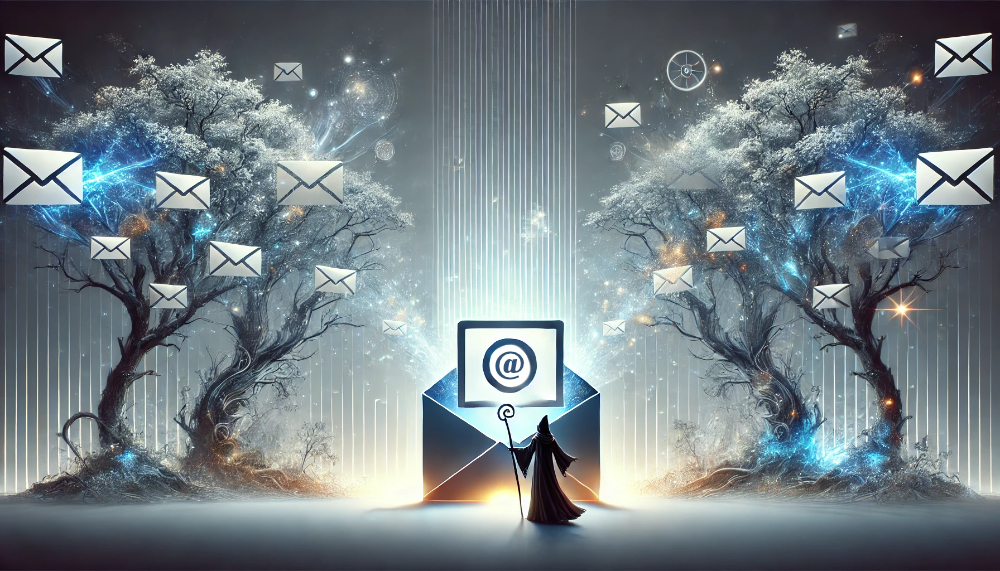
From SRP author Taylen Carver:
This post is part of the Inbox Reboot series:
Part 1: Why It Matters
Part 2: Keep It Clear
Part 3: Working the System
Part 4: The Magic of Filtering
Part 5: Filtering Beyond the Inbox
Part 6: Managing Multiple Email Addresses
Part 7: Taming the Monster Inbox
Beyond the Inbox: Where Email Management Really Happens
Filtering your emails into sub-folders is a great start, but sub-folders should be temporary storage, not a long-term solution. Email programs are designed to deliver emails—not manage them.
The real key to email control is moving emails out of your email program and into systems that help you take action, store important information, and keep your digital life organized.
Let’s talk about where emails should go once they leave your inbox.
Getting Emails Out of Your Email Program
Most people don’t realize that emails don’t have to stay in email at all. Depending on your setup, you can:
- Download emails to your hard drive.
- Forward emails to other apps.
- Copy, cut, and paste content into more useful programs.
By removing emails from your inbox and putting them where you’ll actually use them, you eliminate clutter and free up mental space.
Notebooks: The Ultimate Digital Filing System
I love notebooks.
Three of the most popular digital notebook apps today are Evernote, OneNote, and Notion. All three are free, sync across multiple devices, and allow you to organize and retrieve information with ease.
- Evernote is great for quick, searchable notes and web clippings.
- OneNote is powerful for organizing long-term projects and integrates well with Microsoft Office.
- Notion is highly flexible, allowing for deep customization, databases, and task management—all in one place.
I personally use OneNote because of its seamless connection with my workflow, but Notion is gaining popularity for its all-in-one approach to organization. If you’re looking for a notebook system that also functions as a task manager and knowledge base, Notion is worth exploring.
Why Move Emails to a Notebook?
Notebooks let you store actionable emails exactly where you need them.
- Coupons → Pull up on your phone at checkout.
- Articles → Save for later reading.
- Receipts & Order Confirmations → Store with tracking numbers and follow-up reminders.
- Event Planning → Organize emails, clippings, and notes into a single folder.
- Book Lists → Keep reviews, cover images, and links in a dedicated reading list.
- Important Conversations → Save key emails with context for future reference.
If an email requires action—like responding later—you can save it to your notebook with a reminder so you don’t forget.
Pro Tip: When saving an email to your notebook, attach the original email as a file. That way, you have both a readable version and a copy you can open later if needed.
Task Managers: Turning Emails into Action
Your notebook can help you stay organized, but task managers are built for action.
Some great options include:
- Outlook Tasks – One of the most advanced task managers, especially if you already use Microsoft Office.
- ToDoist – A web-based, cross-platform task manager with great flexibility.
- Google Tasks, Trello, Asana – Other excellent task management apps.
- Notion – Functions as both a notebook and a task manager, making it a powerful all-in-one tool.
Many task managers let you drag and drop emails into tasks or forward them directly to your task list.
When Should Emails Go Into a Task Manager?
- Reminders for Coupons & Discounts → Set an alert for when you’ll actually use them.
- Follow-Up Emails → Schedule a reminder to check in after a package is due to arrive.
- Time-Sensitive Actions → If something must be done later, don’t leave it in your inbox—put it in your task manager.
If your life is complex, a combination of a notebook and a task manager might work best. Experiment and see what fits your workflow.
Archiving: The Smart Way to Save Important Emails
If you’ve been using your email program to store important messages indefinitely, you’re running a huge risk. Most cloud backups don’t automatically save emails, and many email programs’ “archive” features are just fancy sub-folders—not real backups.
To properly archive important emails:
- Save them as PDFs. Most email programs let you print to PDF. This format preserves the email exactly as it was sent, including the sender, date, and content.
- Store them securely. Keep PDFs in organized folders on your hard drive or cloud storage.
- Back up your data. Hard drives fail. Make sure you have an off-site backup or cloud storage solution.
Governments and businesses now rely heavily on email for critical documents, including tax information and contracts. Treat your digital records just as carefully as you would paper files.
Don’t Forget Your Sent Emails
Many people archive important emails they receive but forget about those they send. If you ever need proof of an agreement, confirmation, or conversation, your sent emails are just as critical.
Set a recurring reminder to review and archive your sent folder regularly. Your email program will run faster, and you won’t lose anything important.
Automating External Filters
In an earlier post, I mentioned Zapier and IFTTT—two powerful automation tools.
Once you start setting up your email system, watch for tasks you repeat often. These are great candidates for automation.
For example, I use email rules to:
- Send all podcast notifications to a Listening folder in OneNote.
- Automatically save certain emails to my hard drive.
- Flag key emails for follow-up.
Even if you don’t use Zapier or IFTTT, check your email program’s built-in automation features—you might be surprised at what they can do.
The Big Picture: Where Should Your Emails Go?
- Inbox → Immediate Action or Sorting
- Sub-Folders → Temporary Holding
- Notebook (Evernote, OneNote, Notion) → Long-Term Storage & Reference
- Task Manager (Outlook, ToDoist, Notion) → Actions & Reminders
- PDF Archive → Permanent Records
Your goal should always be to move emails out of your inbox and into the right system where they’ll actually help you.
What’s Next?
Juggling multiple email addresses can be a challenge, but it’s also a great way to keep different areas of your life organized. In the next post, we’ll look at how to manage multiple email accounts efficiently without getting overwhelmed.
Until then, start moving emails into better systems—you’ll be amazed at how much calmer your inbox (and your mind) will feel.
Cheers,
Taylen
Next Post: Managing Multiple Email Addresses

Taylen Carver
SRP Fantasy Author
Browse Taylen’s books here.


